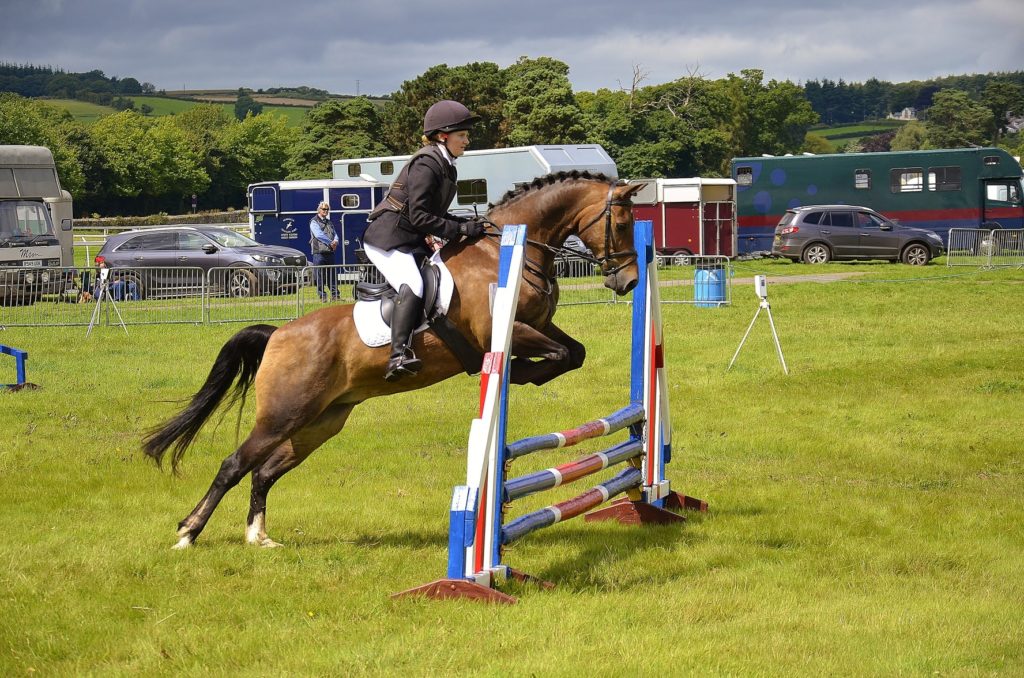The topic of equestrian air vests has entered many the conversation for riders all over the world. Many of us know a person who has delt with serious injury, whether it’s from a sport or an accident. Helmets are normalized amongst riders but should air vests be as well?
In disciplines like cross-country, riders are required to wear a ASTM/SEI-certified body protector and a helmet. Although the removal of permanent obstacles like water and bank jumps has reduced the risk of injury, there is always a chance.
A popular argument is that although newer protective equipment may be helpful, it could also give riders a false sense of security. This could then lead them to participate in activities that may be beyond their skill level. Snowboarders with helmets may decide to go faster or do larger jumps. Despite lower risk of head injury, the risk of other related injuries could increase.
Should you wear an equestrian air vest?
Although they aren’t required, the added safety measure can boost the confidence of any rider. However, will this make riders more daring and try things way outside the scope of their abilities?
Know Your Limitations And Understand Any Risk
Everyone is different. This means that everyone has a different health and risk outline. An injury occurring to a 60 year old will be very different than that of a 20 year old. A tough horse may be easier to ride by someone with 20+ years experience than a rider with only 3 years experience. Additionally, all disciplines carry their own set of risk as well. Cross-country and dressage are two completely different sports and pose much different risks. How much safety equipment, aside from a helmet, should a rider depend on? This depends on the riders abilities, experience and risk preference.
Although research is ongoing, equestrian air vests have shown that they provide significant protection from injuries. However, a protective air vest is no substitution for understanding the rider or the horse’s limitations. Additionally, using a vest or protective jacket shouldn’t give a rider a false sense of confidence that pushes them too far past their abilities. Protective gear does not make a better athlete.
What Role Will Equestrian Air Vests Play In The Future?
Should airbag vests be mandatory for competitions just as riding helmets are? Equestrian air vests are an investment, good quality and reliable ones are not cheap. The prices range from $300 to $1000 for trusted brands. These protective garments are an extra layer of clothing and some may be bulky or difficult to wear. These vests protect against injuries, but there is always a risk. Currently, riders who wear air vests can determine when and in which circumstance the vest is needed.
Studies have shown that safety equipment and advancements in technology or design continue to reduce the risk of serious injury. The United States Hunter Jumper Association (USHJA) has promised to $100,000 to sponsor new helmet studies. Additional studies on the efficacy of air vests should be conducted to help inform riders about their choices in safety gear. The more data available means better and more informed decisions can be made.

As more manufacturers reduce cost and create better designs, we will begin to see more riders using this equipment. Additionally, as the benefits of these protective airbag vests become more known, we can expect more and more riders voluntarily wearing them.
There has been heaps of progress within the last 10 years alone in regards to protective equipment – especially with airbag technology. This shows that steps are being taken to protect riders and athletes. It is undeniable that air vests add an extra layer of protection, but it is crucial to remember that safety does not eliminate risk. Improvements can be made to increase safety measures but it really comes down to the riders abilities and limitations.
Stay Connected